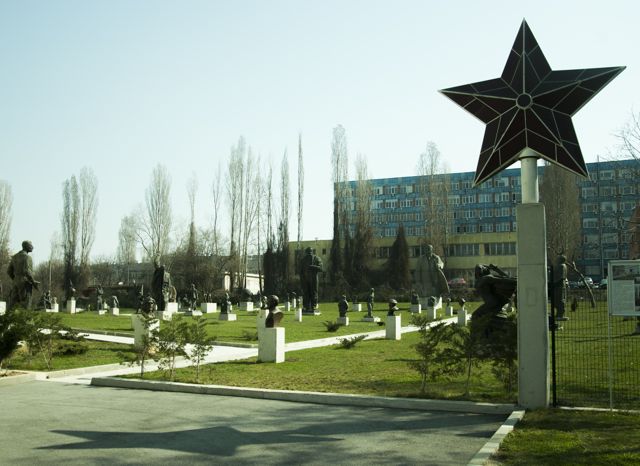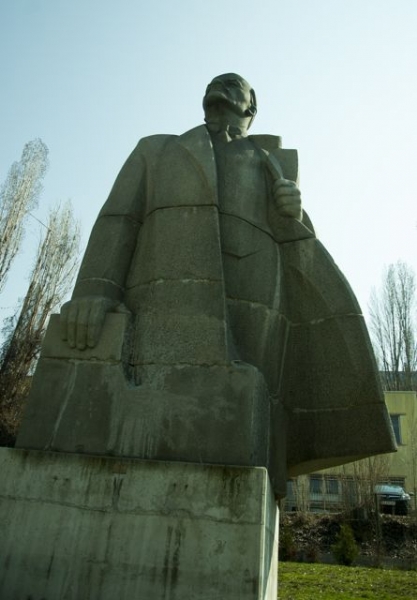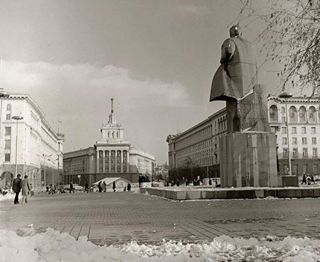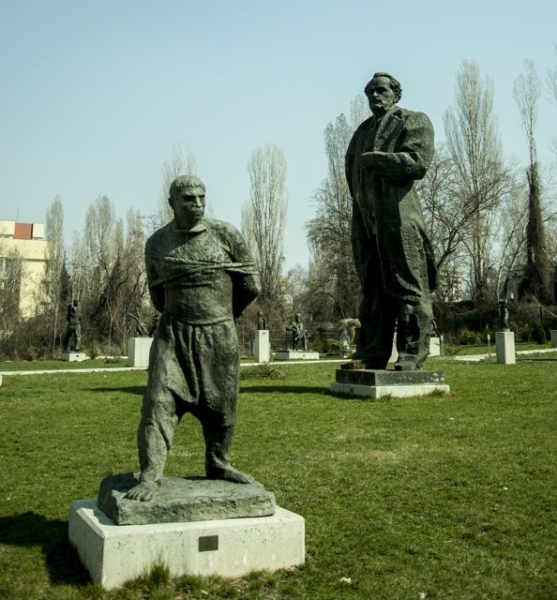Photos: Polina Spartyanova
Polina Spartyanova
Starting today and for a few weeks I will introduce you to the monuments of the socialist past by recalling their former glory and informing you on their present unenviable condition.
The Museum of Socialist Art is probably one of the most controversial museums not only in Sofia but also in Bulgaria. It is the first museum institution in the country designed to collect, preserve and display examples of Bulgarian art created between 1944 and 1989, thematically connected with the period of socialism. The exhibits there are gathered from all over the country since after 1989 the majority of Bulgarian municipalities removed the monuments of personality cult from towns and villages and abandoned them in local storage facilities. Current director of the National Gallery of Art Bisera Yosifova suggested that all the sculptures and monuments be collected in one place following the example of Memento Park in Budapest, which has gathered all the socialist monuments from the streets of the Hungarian capital.
According to the creators of the Museum and the Ministry of Culture it presents works of socialist art, but, actually, there is no such term and, according to the curators of the exhibition, no work can be defined as "socialist art". Since the collection of the Museum of Socialist Art presents some of the most eminent Bulgarian artists who are not associated with the art of this period alone, such as Ilia Petrov and Ivan Kirkov, they cannot be labelled "socialist artists". The term "socialist art" emerged in the USSR during Stalin's rule when works in the so-called socialist realism style were created. The style occurred earlier in the United States as "regional realism" and it was transferred to the USSR where it was modified by the socialist and communist thought of the artists of the time.

Even before entering the Museum of Socialist Art one can see the red five-pointed star that adorned the top of the building of the former Party House (now the National Assembly) and was the symbol of socialism and communism in the People's Republic of Bulgaria from 1954 to 1984, when it was substituted with stars like those in the Kremlin. The red star is not a work of art but is perceived as a symbol of this period. The museum and the park are behind the star itself, and the sculptures there can be divided into three themes, namely heroic, historical and workers’ theme.
 The monuments of personality cult can be perceived as "heroic" as they are mostly of Lenin and "the leader and teacher of the Bulgarian people", Georgi Dimitrov. Here the permanent exhibition of the Museum of Socialist Art displays one of the biggest monuments of Lenin. The four-metre long stone sculpture was erected in the early 1970s in the square in the city centre, where the statue of St. Sophia is located today, by Soviet sculptor Lev Kerbel and was removed at the beginning of transition in Bulgaria. The museum curators made great efforts to organize the transportation of the two huge monuments and their arrangement in the yard of the museum. The bronze sculpture of Georgi Dimitrov, which weighs several tons, had arrived from the museum of VMZ Sopot after they had tried all night to separate the five-metre long sculpture from its pedestals.
The monuments of personality cult can be perceived as "heroic" as they are mostly of Lenin and "the leader and teacher of the Bulgarian people", Georgi Dimitrov. Here the permanent exhibition of the Museum of Socialist Art displays one of the biggest monuments of Lenin. The four-metre long stone sculpture was erected in the early 1970s in the square in the city centre, where the statue of St. Sophia is located today, by Soviet sculptor Lev Kerbel and was removed at the beginning of transition in Bulgaria. The museum curators made great efforts to organize the transportation of the two huge monuments and their arrangement in the yard of the museum. The bronze sculpture of Georgi Dimitrov, which weighs several tons, had arrived from the museum of VMZ Sopot after they had tried all night to separate the five-metre long sculpture from its pedestals.
One of the hallmarks of monumental art in Bulgaria was the love of artists for large sizes, which continued in the next few decades. Generally the period of monumental propaganda in the development of Bulgarian sculpture did not last long, as during the April Plenum of  the Bulgarian Communist Party in 1956, Todor Zhivkov condemned the cult of personality created by former party and state leader Valko Tchervenkov. Therefore, monumental sculpture had relatively few representatives in Bulgaria compared to the monuments that were later built "to perpetuate the glory of the partisans who fell in the resistance movement and as a sign of gratitude to the Soviet Army - Liberator." Due to the short period of monumental propaganda in Bulgaria, the presence of Lenin and Georgi Dimitrov in the park of the Museum of Socialist Art is important because this kind of sculpture is rare in the country.
the Bulgarian Communist Party in 1956, Todor Zhivkov condemned the cult of personality created by former party and state leader Valko Tchervenkov. Therefore, monumental sculpture had relatively few representatives in Bulgaria compared to the monuments that were later built "to perpetuate the glory of the partisans who fell in the resistance movement and as a sign of gratitude to the Soviet Army - Liberator." Due to the short period of monumental propaganda in Bulgaria, the presence of Lenin and Georgi Dimitrov in the park of the Museum of Socialist Art is important because this kind of sculpture is rare in the country.

The workers’ theme in the monumental park is presented by sculptures of working men and women who embody the heroism of the working class in Bulgaria. The typical figures of socialist realism, namely partisans, Red Army men, workers and farm workers, are positioned among the monumental sculptures of famous Bulgarian and Soviet communists. It seems that here the communist leaders are still perceived as "common people", trying to mingle with the proletariat as they did in the period of socialist society. However, the size of both types of figures itself represents the gap that existed between the working class and its leaders.